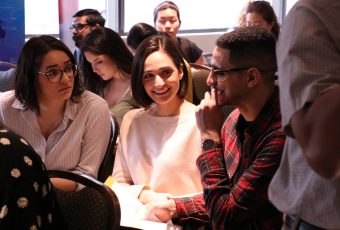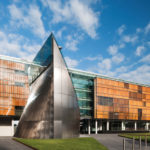Sydney health sciences student studies soccer kicking technique
New research from the Sydney Faculty of Health Sciences claims that it is possible to teach the perfect strike if coaches properly understand the science behind soccer kicking technique.
As millions of young boys and girls worldwide dream of one day playing in the World Cup after watching the Socceroos in action in Brazil, the findings could influence the way children are taught ball skills to help them realise their dreams.

Honours student Denny Noor, a keen soccer player since the age of 5, is carrying out research to uncover the technical attributes that define elite soccer kicking technique.
“Soccer is a sport in which the primary skill is to be able to kick the ball with speed and accuracy. If we can break down the science and describe how it is done, then kicking the ball well becomes a learnable skill,” he said.
Noor presented his preliminary research at the World Conference on Soccer and Science recently held in the United States and was awarded second place in the Young Investigator’s Award.
He uses 3D motion analysis of elite players to examine how changes in the direction and movement of the body at different stages results in different types of kicks, in terms of the speed, accuracy and swerve of the ball.
The project is innovative as previous research has focused either on specific portions of the kicking sequence or the type of ball flight produced from a kick. His study examines the entire kicking process from the approach, to the length of the last stride, and combined this with ball flight characteristics.
“Too often soccer kicking is taught at young ages by simple repetitive practice without correct instruction. I think this work could have huge potential in helping coaches develop young players rather than just scouting for natural talent,” said Noor. “At advanced levels it can be used to direct players on controlling the spin they put on a soccer ball by altering their kicking motion.
“Although I admit the unpredictable spin that someone like Cristiano Ronaldo puts on a ball would be a very hard skill to teach, and took Ronaldo years of practice to master.”
The Sydney Health Sciences student is currently completing his Bachelor of Exercise and Sport Science (Honours) degree at the University of Sydney under the supervision of Dr. Rene Ferdinands, and plans to continue onto a PhD to further his research.
In the meantime he has been glued to the screen watching some of the world’s best strikers in action at the 2014 World Cup.
Master of Exercise Physiology
The Master of Exercise Physiology is designed to produce graduates who possess the knowledge, competencies and clinical experience required for safe and effective clinical exercise practice.
Students will explore metabolism and physiology, human motor learning and control, the principles of exercise programming, nutrition and pharmacology, and musculoskeletal principles of exercise. Integrated clinical practice instruction, practicums, and case studies will provide the advanced skills and experience essential for professional practice.
Clinical placements are undertaken in both the public and private sectors. Students will have the opportunity to develop an understanding of the career path they have chosen, and its place in the contemporary health system.
Program: Master of Exercise Physiology
Location: Cumberland campus (in Lidcombe, a suburb of Sydney), New South Wales
Semester intake: March 2015
Duration: 2 years
Application deadline: October 1, 2014
*


































Ask A Question
Ask us about your program of interest, or if you have a question about our services.
CONTACT US TODAY